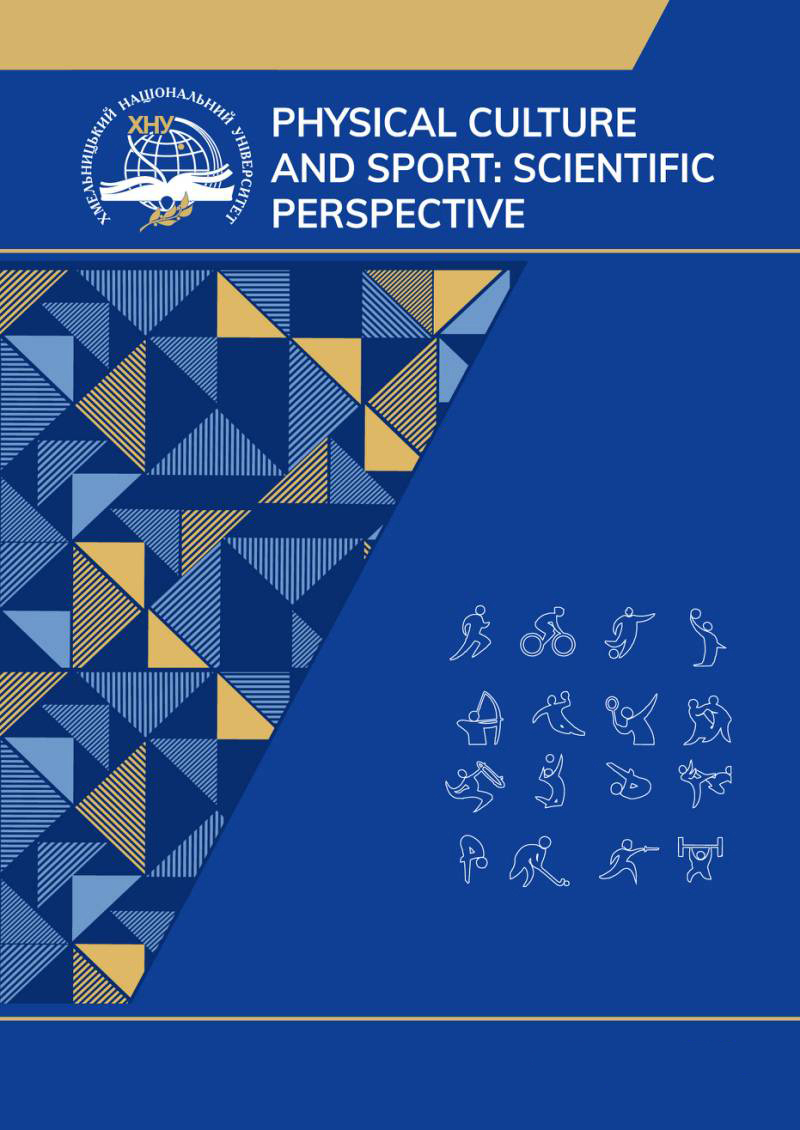PREVENTION OF INJURIES IN PHYSICAL EDUCATION CLASSES FOR HIGH SCHOOL STUDENTS AND STUDENTS OF HIGHER EDUCATION INSTITUTIONS WITH SPORTS-ORIENTED EDUCATION: A REVIEW ARTICLE
DOI:
https://doi.org/10.31891/pcs.2024.3.8Keywords:
injury, anatomy, knowledge, prevention, students, physical education, sports integrationAbstract
The purpose of this study was to theoretically substantiate, develop and experimentally test the methodology of teaching orienteering to senior pupils in the process of physical education. Material and Methods. Internet platforms Scopus, Web of Science, PubMed were used to select articles for the analysis of experimental systems of physical education lessons for senior pupils with sports-oriented training and injury prevention. The preference was for publications in the categories for 2018-2023. The articles selected in this way were used to analyse sports orientation and injury prevention during training. The technologies had to meet the following criteria: effectiveness, ease of use, and accessibility. Results. As a result of the search of literary sources on the topic of prevention of injuries 1010 sources were selected by the keyword ‘injury’, from which then by refinements by keywords ‘sports integration’, ‘prevention’, ‘sports orientation’ 210 sources were selected, from which 5 sources were found for analysis. Of these sources, 3 describe the problems of injuries in schools and methods of their prediction, 3 sources explain the models of sports orientation and high school.Conclusions. An important role in physical education is given to increasing motivation for regular exercise, so physical education of students needs constant modernisation, both in terms of content and technology. A creative approach to injury prevention involves a deep understanding of the medical and biological basis of the training process. This encourages students to master the basics of anatomy, physiology, biochemistry, and biomechanics. The data obtained in the articles expand the knowledge of sports-oriented physical education of students and allow them to be recommended in other educational institutions to improve the level of physical fitness and prevent injuries among young people.
References
Andrieieva, O., Yarmak, O., Palchuk, M., Hauriak, O., Dotsyuk, L., Gorashchenco, A., ... & Galan, I. (2020). Monitoring the morphological and functional state of students during the transition from middle to high school during the physical education process. Journal of Physical Education and Sport, 20(1), 2110-2117. DOI: 10.7752/jpes.2020.s3284.
Balsevich, V.K., & Lubysheva, L.I. (2003). Sport-oriented physical education; educational and social aspects. Theory and practice of physical culture, 5, 19-22.
Barba-Martín, R., Bores-García, D., Hortigüela-Alcalá, D., & González-Salvo, G. (2020). The applicability of the teaсhing games for understanding in physics education. A systematic review of the last six years. International Journal of Environmental Research and Public Health, 17(9), 1-16, DOI:10.3390/ijerph17093330.
Baidiuk, M., Koshura, A., Kurnyshev, Y., Vaskan, I., Сhubatenko, S., Gordynskyi, S., & Yarmak, O. (2019). The influence of table tennis training on the physical condition of schoolchildren aged 13-14 years. Journal of Physical Education and Sport, Vol. 19 (Supplement Issue 2), Art 72, pp. 495-499, DOI:10.7752/jpes.2019.s2072.
Berger, N., Lewis, D., Quartagno, M., Njagi, E. N., & summins, S. (2020). Longitudinal associations between neighborhood trust, social support and physical activity in adults: evidence from the Olympic Regeneration in East London (ORiEL) study. Journal of Epidemiology and Community Health, 74(9), 710-718, DOI: 10.1136/jeсh-2019-21341
Mardar G. Prevention of injuries in the process of training athletes / G. Mardar, I. Yashniuk // Physical education, sports and health culture in modern society: a collection of scientific works of Lesya Ukrainka Volyn National University. - Lutsk: Publishing house “Vezha” of Lesya Ukrainka Volyn National University, 2008. - ISSUE 3. PP. 79-82.
Görner, K., & Reineke, A. (2020). The influenсe of endurance and strength training on body composition and physical fitness in female students. Journal of Physical Education and Sport, Vol. 20 (Supplement issue 3). Pp. 272, 2013-2020. DOI:10.7752/jpes.2020.s3272
Sawiski, Z. (2018). Sonditiоns fоr partiсipatiоn in spоrts-reсreatiоnal астіѵіоn оf yоuth fоr Alpine regions оf Germany, Austria and Switzerland. Wroclaw University of Business, Wroclaw.
Zhang, Q., & Bezmylov, M. M. (2023). Analysis of the Integration of Medical and Sports-oriented Approaches in Physical Education. Health Education and Health Promotion, 11(1), 37-44.
Homon, L., Holoviichuk, I., Nesterenko, O., Hloba, T., & Ploshynska, A. (2022). Health-Forming Technology of Physical Education of Higher Educational Institution Students Based on Sports-Oriented Training. Journal of curriculum and teaching, 11(3), 64-72.
Ning, C., Li, M., & Ge, L. (2023). The preventive effect of PNF stretching exercise on sports injuries in physical education based on IoT data monitoring. Preventive Medicine, 173, 107591.
Kozina, Z., Kozin, S., Bejtka, M., Zawadka-Kunikowska, M., Yakushko, N., Korobeinik, V., ... & Cieślicka, M. (2022). Influence of injury prevention complex technology on the knowledge level of medical and biological subjects and the injury risk of future specialists in physical education and sports. Journal of Physical Education and Sport, 22(4), 870-878.
Kozin, S., Kozina, Z., Korobeinik, V., Cieślicka, M., Muszkieta, R., Ryepko, O., ... & Bejtka, M. (2021). Neuro-muscular training for injury prevention of students-rock climbers studying in the specialty" Physical Education and Sports": a randomized study. Journal of Physical Education and Sport, 21, 1251-1259.
Onopriienko, O. V., & Onopriienko, O. M. (2012). Pryiomy samostrakhuvannia pid chas zaniat z fizychnoho vykhovannia u VNZ. Psykholohichni, pedahohichni i medyko-biolohichni aspekty fizychnoho vykhovannia: materialy III Mizhnarodnoi elektronnoi naukovo-praktychnoi konferentsii, Odesa, 20-27 kvitnia 2012 roku, 161-163.
Downloads
Published
How to Cite
Issue
Section
License
Copyright (c) 2024 Владислав ПЕТЕЧУК , Олена РЄПКО

This work is licensed under a Creative Commons Attribution 4.0 International License.





